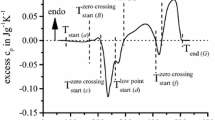Abstract
Heat treatable aluminium alloys are widely used in modern car bodies to achieve lightweight cars. Compared to steel, aluminium alloys are more sensitive to creep behaviour under high elastic stresses, since their melting point of about 600 °C is much lower. In order to predict permanent deformations of outer shell panels due to thermal stresses in drying processes and ensure highest quality standards regarding appearance to the customer, interdependencies with production process history must be evaluated. In this work, stress relaxation of the aluminium alloy AA6016 in initially T4 temper has been examined within the elastic regime with focus on the dependency of plastic pre-strain during primary creep phase. As a result, pre-strain becomes more important the higher the temperature was set. Hence, the former production process history of aluminium sheet metal parts must be taken into account when viscoelastic deformations are investigated. Based on the test results a pre-strain dependent material model for finite element simulations is pointed out, which can be used for novel deformation analyses of car bodies in automotive paint drying processes that contain aluminium parts out of AA6016.






Similar content being viewed by others
References
Goede M (2011) Mischbaustrategien im Karosseriekonzept. In: Neugebauer R (ed) 6th Chemnitz car body colloquium, vol 59, pp 95–113
Seehafer G (2014) The body structure of the new Audi TT. ATZ Worldw 116(7–8):30–35
Hirsch J (2004) Automotive trends in aluminium—the European perspective. Mater Forum 28:15–23
Friedrich HE (2013) Leichtbau in der Fahrzeugtechnik. Springer, Berlin
Dietrich R (2014) Thermal stress in the paint shop oven process (Delta-Alpha). In: Proceedings of automotive circle international 2014–04-02, Bad Nauheim
Polmear IJ (2004) Aluminium alloys—a century of age hardening. Mater Forum 28:1–14
Ashby MF (1972) A first report on deformation mechanism maps. Acta Metall Mater 20(7):887–897
Ostermann F (2014) Anwendungstechnik aluminium. Springer, Berlin
Regensburger J, Mendes de Lima L, Albiez C, Weigel P, Drossel WG (2015) Creep behaviour of AA6016 during automotive paint drying processes. Key Eng Mat 639:443–450
Betten J (2010) Creep mechanics. Springer, Berlin
da Andrade ENC (1914) The flow in metals under large constant stresses. Proc R Soc Lond Ser A 90(619):329–342
Jaglinski T, Lakes R (2004) Creep behaviour of Al–Si die-cast alloys. Trans ASME 126:378–383
Di Michele G, Guglielmi P, Palumbo G, Sorgente D (2015) Investigation on the strain behaviour of a precipitation-hardenable aluminium alloy through a temperature gradient based heat treatment. Key Eng Mat 639:361–368
Nabarro FRN, de Villiers HL (1995) The physics of creep. Taylor & Francis, London
Hussnaetter W, Merklein M (2008) Characterization of material behavior under pure shear condition. Int J Mater Form 1:233–236
Prillhofer R, Rank G, Berneder J, Antrekowitsch H, Uggowitzer PJ, Pogatscher S (2014) Property criteria for automotive Al–Mg–Si sheet alloys. Materials 7(7):5047–5068
Wu MY, Sherby OD (1984) Unification of Harper–Dorn and power law creep through consideration of internal stresses. Acta Metall Mater 32(9):1561–1572
Solberg JK, Thon H (1985) Stress relaxation and creep of some aluminium alloys. Mater Sci Eng 75:105–116
Teichmann K, Mariorara CD, Andersen SJ, Marthinsen K (2012) The effect of preaging deformation on the precipitation behaviour of an Al–Mg–Si alloy. Metall Mater Trans A 43(11):4006–4014
Albiez C, Liewald M, Goerres A, Regensburger J (2011) Numerical prediction of thermal panel distortion incorporating thermal material properties of 6016 aluminum alloy. In: Proceedings of European aluminium congress 2011-11-23, Duesseldorf
Hetnarski RB, Eslami MR (2009) Thermal stresses—advanced theory and applications. Springer, Dordrecht
Kao R (1981) Nonlinear creep buckling analysis of initially imperfect shallow spherical shells. Comput Struct 14(1–2):111–122
Author information
Authors and Affiliations
Corresponding author
Rights and permissions
About this article
Cite this article
Regensburger, J., Cwiekala, N., Albiez, C. et al. Pre-strain dependent relaxation behaviour of AA6016 during automotive paint drying processes. Prod. Eng. Res. Devel. 10, 113–118 (2016). https://doi.org/10.1007/s11740-015-0655-2
Received:
Accepted:
Published:
Issue Date:
DOI: https://doi.org/10.1007/s11740-015-0655-2




